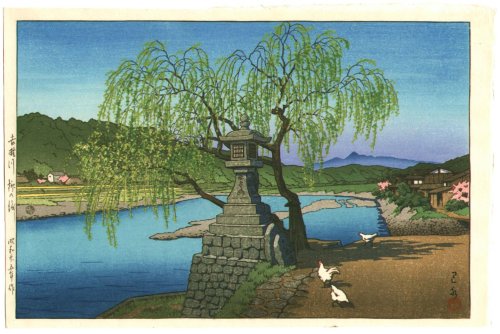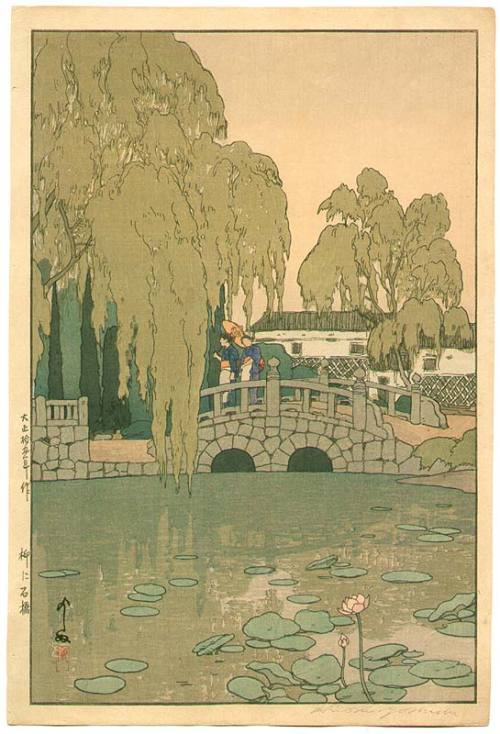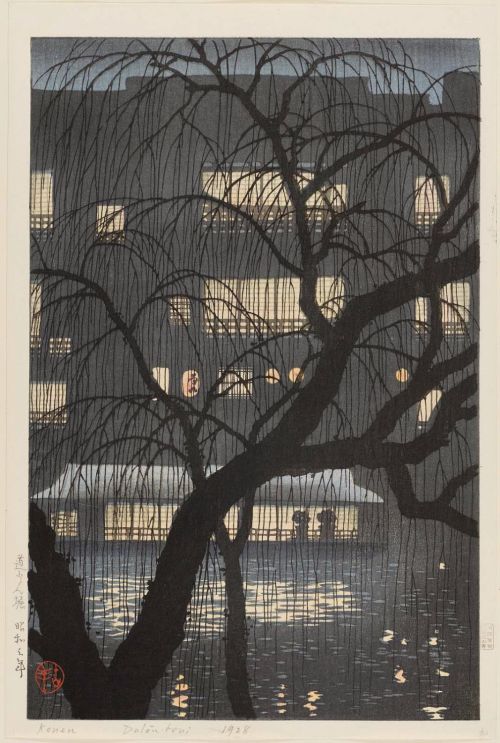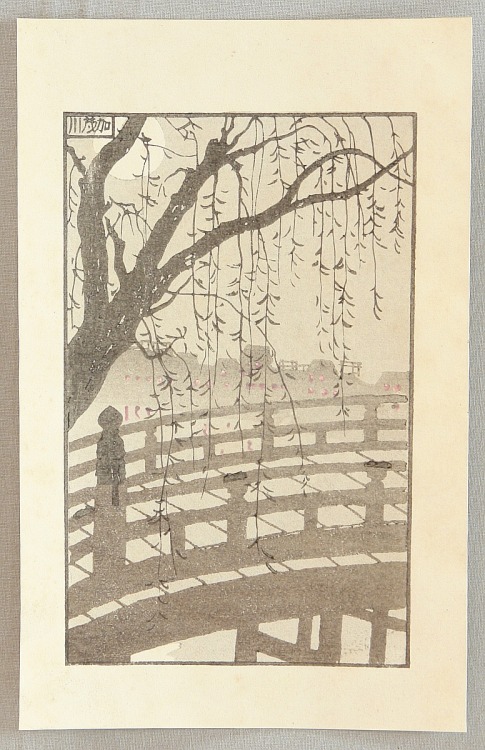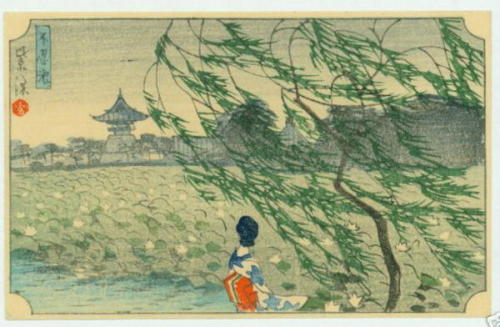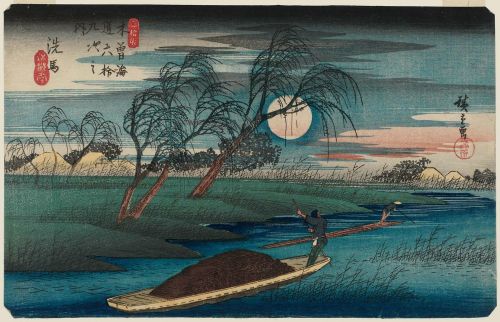oldtimejapan: arelativenewcomer: In the shadeof a roadside willownear a clear flowing streamI stoppe
oldtimejapan: arelativenewcomer: In the shadeof a roadside willownear a clear flowing streamI stoppedfor just a while, I thought.(Saigyō [1118–1190], Japanese monk and poet of the late Heian and early Kamakura period) The deep melancholy of willows is written in their branches. They spring boldly upwards from the trunk only to bend back down to the ground in a cascade of slender arcs—just as if forced by a sudden reminiscence or a sense of duty strong enough to discourage them from winging their way in the clouds. Perhaps they find some comfort in sheltering wanderers and poets. Resting in the shade of willows with (top to bottom, left to right): Kawase Hasui, Willow of Ferry Station at Yoshino River, 1950 [source]; Okuyama Gihachiro, Yanagi Willow on the Bank of the Misogi River at Nanao, 1943 [source]; Yoshida Hiroshi, Willow and Stone Bridge, 1926 [source]; Uehara Konen, Dōtonbori, 1928 [source]; Maeda Masao, Willow Trees in Shinbashi, 1984 [source]; Nakazawa Hiromitsu, Kamo River, 1911 [source]; Kasamatsu Shiro, Shinobazu Pond, no date [source]; Utagawa Hiroshige, Seba, from the series The Sixty-nine Stations of the Kisokaidō Road, 1835–1838 [source]. 道のべに 清水流るる柳陰 しばしとてこそ 立ちどまりつれ 西行法師 -- source link
Tumblr Blog : arelativenewcomer.tumblr.com
#kawase hasui#saigyou
